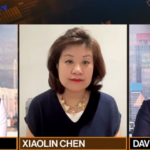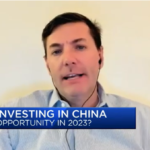The Facts on China’s June Correction
an outline of why we believe China is still an attractive investment opportunity.
Executive Summary
- China's onshore markets experienced a pullback in June
- The underlying factors that caused the onshore markets to rise are still intact.
- The government has met the pullback with a powerful intervention
July 16, 2015 – A strong stock market benefits China’s key policy goals: Renminbi (RMB) internationalization, increased domestic consumption, and unlocking shareholder value in state owned enterprises. The markets' more prominent role in helping China achieve these goals is one explanation for the rise in the onshore markets, which are up 110% over the past year1. Due to this increased emphasis, China met the recent pullback with a powerful intervention. The cause of the pullback and the Chinese government’s actions to contain it can be confusing to investors outside of China. In this piece we provide an up to date overview of the onshore markets and outline why we believe China is still an attractive investment opportunity.
Recent Events
Stock investing in China is still a new concept and the majority of Chinese households have less money in the markets than those in the United States. Market exposure on a household basis has yet to be institutionalized in China like it is in the U.S., for instance there are no 401k plans in onshore China, thus the market’s drop adversely effects a smaller subset of the population in China than it would in the United States.
In the U.S. the savings rate is 5.1%2 with 25% of net worth going into the markets3. In China the savings rate is an impressive 50%4, however, according to China economic research firm PRC Macro, the average household only has 4.4% of their net worth5 invested in the stock market. Based on this comparison, China’s household participation in the stock market compared to its savings rate is relatively low. China’s leadership understands this disparity and has encouraged its people to invest in the capital markets to bring their participation rates up to par with developed nations and to institutionalize the market. This trend is apt to continue in the years to come, which could act as tailwind for investors.
Reasons for the June pullback
With such a massive influx of investors into the markets as China is currently experiencing, there is bound to be some measure of volatility. The adoption of margin6 by investors with little stock market experience struck us as imprudent. We believe overextension of margin was the primary cause of the June pullback.
Individual retail investors, who represent 85%7 of the market in onshore China, invested heavily in small cap stocks. These individuals bought on margin, leveraging their capital to cover the costs. Before the decrease in Chinese stock prices in June, brokerage margin increased as the onshore market performed well over the last year. In addition, as the markets continued to grow, the use of over the counter (OTC) margin increased. OTC margin is money leant by non-brokerage firms outside of the regulated markets and, in the case of China, allowed leverage upwards of three to five times the money deposited. While it is difficult to gauge exactly how much OTC margin was in the markets at their peak, between the months of March and May of 2015, it is estimated to have been between 1.5 and 2 trillion RMB8.
When a large number of Initial Public Offerings (IPOs) and secondary offerings took place in June, Chinese investors started selling their small cap shares in order to invest in the IPOs. As a result, supply overwhelmed demand and triggered a cascade of selling that led to a significant amount of margin calls. A margin call occurs when a broker asks for more capital from an investor to cover a decrease in value of a stock.
Halted and Suspended Securities
In order to prevent large numbers of investors from being forced to sell due to compounding margin calls, regulators took the unprecedented measure of allowing companies, particularly small cap companies, to voluntarily halt trading in their stocks. The regulators realized that OTC margin, which is outside the scope of their regulatory purview, had the potential to be a systematic threat to the stock market. While stocks halted, regulators could deleverage both brokerage and OTC margin accounts. OTC margin has fallen 66% in the last several weeks alone due to this effort.9 Our partners in onshore China have reported that the OTC margin business has been largely shut down.
While many press reports highlighted the number of stocks halted they failed to show the size of these companies. According to Bloomberg, As of July 15’s close in China:10
- 75% (2,211 stocks) are trading, which is 88% of the 6.5 trillion total market cap for the 2951 stocks listed in the onshore exchanges.
- 4% (132) are suspended, representing 4% of market cap.
- 18% (540) are halted, representing 8% of the market cap
- 2% (68) are inactive, representing 0% of the market cap; these companies were scheduled to have initial public offerings but had their IPOs suspended due to a moratorium on new IPOs.
Our portfolios hold predominantly large cap stocks and some mid-cap stocks. Media reports on halted stocks were correct in the number of stocks halted, however, they failed to note the majority of these halts were small or micro cap stocks.
Valuations
We previously stated that we believe investors should avoid small cap stocks due to high valuations. Even today the ChiNext stocks, a segment of the Shenzhen Stock Exchange that represents small cap growth companies, are two standard deviations11 above their average price-to-equity (P/E)12 of 55 at 86, though down from their June 3 high of 14713. The KraneShares Bosera MSCI China A Share ETF (ticker : KBA)'s stocks currently have a forward P/E of 15 while the combined Shanghai and Shenzhen Composite has a P/E of 17 versus its ten-year average of 1915.
Where do we go from here?
While not of the same magnitude as 2008, there are parallels between China’s recent correction and the U.S. housing crisis. In both cases, standards amongst lenders varied and in many cases decreased over time. Just as no document home mortgages in the U.S. were allowed despite rational thinking, retail investors in onshore China were able to obtain questionable amounts of leverage. Ultimately the U.S. housing market fell and regulators instituted new standards. In China regulators are instituting new policies prohibiting OTC margin. We hope means based testing for the use of margin at brokerage houses is also instituted. Much like how the U.S. housing crisis and subsequent recovery affected certain geographic areas more than other areas, China’s stock market is not apt to see a uniform rise. We believe investors should continue to underweight small cap securities due to high valuations and instead favor large cap stocks, which have returned to their historical average valuations15.
We believe China will continue to pursue policies that aid its ascent as a global economic power. China is focused on increasing global competitiveness of State Owned Enterprises, we believe these stocks have potential to continue to perform well. Between China's continued development policies and MSCI’s forthcoming inclusion of onshore equities, we believe investors should seek greater exposure to onshore China. As China evolves from being a retail market dominated by individual investors to an institutional oriented market like that of the United States we believe its markets may continue to grow and perform well.
- Data based on MSCI China A International Index as of 7/14/15.
- Data from World Bank as of 2013. Savings rate: The amount of money, expressed as a percentage or ratio, that one deducts from his/her disposable personal income to set aside as a nest egg or for retirement.
- U.S. Federal Reserve. "Financial Accounts of the United States: Flow of Funds, Balance Sheets, and Integrated Macroeconomic Accounts" June 11, 2015.
- Data from World Bank as of 2013.
- Data from PRC Macro as of 4/28/2015.
- Margin: The purchase of an asset by paying the margin and borrowing the balance from a bank or broker. Buying on margin refers to the initial or down payment made to the broker for the asset being purchased. The collateral for the funds being borrowed is the marginable securities in the investor's account. Before buying on margin, an investor needs to open a margin account with the broker.
- Data from the Shanghai Stock Exchange as of 2012
- Ai Jingwei. "OTC how to raise capital with the stock market", Sina Finance, 7/14/2015.
-
Percent change calculated from data reported by Sina Finance (source 7) and People’s Daily, "From The CSRC: The Amount of Off-Balance Sheet Lending is Close to 500 Billion, 15 Billion Forced to Close Shop", People's Daily, 6/30/2015.
Previous amount of margin was approximately 1.5 trillion RMB between March to May 2015 according to Sina Finance. The current amount of margin is now 0.5 trillion RMB as of 6/30/2015 according to People’s Daily.
- Data from Bloomberg as of 7/15/2015.
- Standard Deviation: A measure of the dispersion of a set of data from its mean. The more spread apart the data, the higher the deviation. Standard deviation is calculated as the square root of variance.
- Price-to-equity: A ratio used to compare a stock's market value to its book value. It is calculated by dividing the current closing price of the stock by the latest quarter's book value per share.
- Data from Bloomberg as of 7/14/2015.
- Data from Bloomberg as of 7/14/2015.
- Data from Bloomberg as of 7/14/2015.


















